Born on 14 January 1864, Ruthven-Smith was the son of bank owner Frederic Chatfield Smith and Harriet Mathilda Pym. He was born and grew up at Bramcote Hall near Nottingham, one of twelve children. He changed his surname from Smith to Ruthven-Smith later in life.
Family members sold the 21-bedroom Bramcote Hall in 1920. It then became a prep school before it was demolished.
Personal Life
Ruthven-Smith married Laura Olivia Colomb on 28 March 1894 at St Saviour’s Church in St George Hanover Square, London. The couple visited Adelaide in 1901 after Ruthven-Smith had inherited some land from his grandfather. Samuel George Smith, Ruthven-Smith’s grandfather, had bought land in Adelaide soon after South Australia was proclaimed. Alfred Hardy, a surveyor who assisted Colonel Light in laying out Adelaide, took up the land on his behalf. By 1901 Ruthven-Smith had inherited some of the land including town acres 332, 317 and half of 318, which were still vacant. During his 1901 visit to Adelaide, Ruthven-Smith instructed his agent, Alfred Hardy’s son Charles Burton Hardy of Fenn & Hardy solicitors, to begin building. This may have been Ruthven-Smith’s only visit to Adelaide. Ruthven-Smith also inherited several business premises on the north side of Rundle Street, extending 166 feet west from Pulteney Street. He sold the properties to Charles Moore in 1911 for £40,000.
Seventeen Houses
Town acres 317 and 318 included what is now Ruthven Avenue; the southern end of Gray Street (called Burton Avenue initially); and the stretch of Grote Street between them, opposite the home built by Sir George Strickland Kingston.
On those streets Hardy arranged for seventeen houses to be built. The houses were of a good standard, and most of them have survived to today, at 182-190 Gray Street, 238-248 Grote Street, and 9-18 Ruthven Avenue. The houses were designed by Scottish architect and engineer Alfred Barham Black who was the father of the artist Dorrit Black. In 1906 The Advertiser published a glowing description of the buildings:
Seventeen pretty villas occupy the ground, their size varying from five rooms to seven rooms. They are of the most modern construction, with every convenience internally, and they are of ornate design. They are built of Tapley’s Hill stone [bluestone], with brick dressings; the roofs are tiled; they have verandahs, and in front of each a little garden has been formed and planted by the landlord. The houses are lighted throughout by electricity, and are in every way modern dwellings. Most of them front Grote Street, but some abut on Ruthven Avenue or Burton Avenue, both of which, as well as the main frontage, have been planted with plane trees and English elms.
A nine foot high galvanised iron fence separated the houses from the adjoining land on the north side, and Ruthven Avenue and Burton Avenue both ended at the fence, halfway between Grote Street and Franklin Street. The Burton Avenue houses are on the eastern side of the street; St Patrick’s Church (not the current one but an earlier one), on the corner of Grote Street and Burton Avenue, was on the western side. Ruthven-Smith and Archbishop John O’Reily each gave a strip of land fifteen feet wide to form Burton Avenue. Later Burton Avenue became part of Gray Street, but Ruthven Avenue still ends where the fence was.
Ruthven-Smith intended the houses to be rented to tenants of modest means. In May 1905 one of the houses, with four rooms and a large hall, was advertised to let to a good tenant for 12/6 per week. Among the first tenants were gasfitter AH Chapman, baker Ed Jones, and lithographer WF Webb.
In 1909 all 17 houses were advertised for sale by auction. The advertisement stated in part:
No one who has passed down Grote-street to West Terrace can have failed to notice and admire these VERY CHARMING RESIDENCES, which have been substantially built, and artistically finished in a manner which is, alas, too seldom witnessed in houses of this description.
Of the remaining houses, some are still used as residences and some are occupied by businesses. They were added to the SA Heritage Register on 11 September 1986.
Some of the early occupants of these houses attracted the attention of the media.
In 1934 labourer George Williams was charged with wounding 69 year old labourer Frederick Sleader who lived in Ruthven Avenue. According to Sleader he was at Mrs Sanderson’s house in Oakley Street when a man he didn’t know pushed his way in and hit him several times with a bottle. Constable Heusler attended the house and found Williams and Mrs Sleader there, and arrested both of them for drunkenness. Williams’ story was that he had met Mrs Sleader and another woman in Franklin Street where they had two bottles of wine together. Later he went to the house in Oakley Street and saw Sleader assaulting Mrs Sleader. He intervened then when he went inside Sleader hit him with a bottle. Sleader spent 10 days in hospital as a result of the incident but the court accepted Williams’ story and he was found not guilty.
In 1937 fourteen year old Alexander Fitzpatrick threw petrol into a rubbish bin in his backyard in Ruthven Avenue and set fire to the contents of the bin. The bin exploded and Alexander was dazed and his eyebrows were singed, but otherwise he was unhurt.
And in another 1937 story, 12 year old Francis Myers of Ruthven Avenue was bitten by a dog that was standing guard over its dead canine companion in Grote Street. The dog stood guard from lunch time one day until the next morning, through a cold and wet July night, and only left when the dead dog was removed.
Fish Market
Ruthven-Smith’s town acre 332 adjoined the Central Market on the western side.
In 1906 CB Hardy had a fish market built for Ruthven-Smith on part of the property, and leased it to J Wiseman & Co who had operated one of Adelaide’s fish markets nearby for more than 20 years.
The single storey building was brick, with a concrete floor that could be kept clean easily. There was an area at the back where vehicles could reverse up to the building to unload. The building featured a refrigeration chamber that could hold five tons of fish, two offices at the front, and a bath at the rear for washing fish. The architect was again AB Black and the building cost around £900.
Wiseman & Co advertised that they could forward fish, fresh or smoked, as well as oysters and crayfish, all over South Australia.
The Quartzite Mantle Company took over the building in 1910. They manufactured gas mantles which produced incandescent light.
In 1914 ET Fisher & Co, electroplaters and cycle and motor builders, moved into the building. A second storey was added to the building during their tenure, and in the 1920s a petrol pump, one of Adelaide’s first, was installed in front of the building.
The building has survived two fires. In May 1912, during the tenure of the Quartzite Mantle Company, a fire destroyed expensive machinery as well as stock and fittings and timber interior walls. The second fire, in 1923, started when an employee of ET Fisher & Co spilled petrol outside the front of the building and it ran inside, down the sloping floor, and was ignited by a lighted gas jet. The timber interior walls and staircases and the rafters were all on fire but all of the 30 or more employees escaped with only one injured.
The building is still standing, with the name ‘ET Fisher & Co’ in plaster moulding on the façade of the second floor, and it was included on the SA Heritage Register on 1 November 2001.
Empire Theatre
In 1906 when the fish market was built, Ruthven-Smith leased the adjoining land on the eastern side to vaudeville entrepreneurs Lennon Brothers who began operating the Hippodrome, an open-air entertainment venue, there. On 7 November 1908 Lennon Hyman & Lennon began showing regular movies at the Hippodrome. The operators called their new venture ‘Royal Pictures’ and proudly advertised the new asphalt floor in their open-air theatre.
Also in November 1908 it was announced that Ruthven-Smith would build an 800-seat theatre on the site, to be leased by Lennon Hyman & Lennon. Tram services had recently been extended to the suburbs and it was expected that with transport available, more people would come to the city for entertainment.
The architect, AB Black again, visited theatres in Melbourne and Sydney before drawing up plans for the new theatre. The new two storey building was built in three or four months, by Maddern & Son. Opening night was 10 April 1909. Tickets were sold out 45 minutes before the show started and hundreds of people were turned away. The entertainment included singing, dancing, comedy, juggling, acrobatics, and an orchestra.
The building featured a wide double staircase with marble steps leading to the dress circle, a sloping floor in the auditorium to give everybody a good view, eight toilets, a sliding roof which could be opened on hot nights, and a fireproof asbestos stage curtain. Doctors could leave their name and seat number at the office in case they were needed elsewhere during a performance.
Early in 1926 Charley Toohey began holding regular boxing matches at the theatre.
At the end of 1952 the theatre closed and the building was leased to Peoplestores, the Gouger Street department store that backed onto the theatre. The theatre was remodelled to form part of the store, and Peoplestores then had an entrance from Grote Street as well as its main entrance in Gouger Street. Peoplestores closed around 1980 and since then the building has had a variety of uses.
The building is still there today, at the western side of the entrance to the Market car park. It was added to the SA Heritage Register on 1 November.
Grote Street Shops
At the western end of town acre 332 Ruthven-Smith also built a building containing three two storey shops at 75-79 Grote Street, completed around 1909.
In 1901 CB Hardy applied for Ruthven-Smith’s land to be Torrens titled under the Real Property Act. Prior to the introduction of Torrens title there was no registry of land ownership and ownership was only recorded in documents held by property owners. The Act required applicants to state whether land was occupied and Hardy stated that acre 332 was unoccupied apart from a portion that was leased. Then in 1907 when Hardy was planning to build on the site, it was discovered that a fence built by the neighbouring property owners on the western side did not run along the boundary between the properties but instead was more than a foot inside Ruthven-Smith’s property. Although Hardy was not aware that the fence was on Ruthven-Smith’s land the Registrar-General contended that Ruthven-Smith’s title should be cancelled because it had been obtained by fraud as the neighbours were occupying the western strip of the property. Ruthven-Smith commenced legal action against the Registrar-General and was successful in the lower court. The Registrar-General appealed but the Full Court dismissed his appeal.
The 2008 City of Adelaide Heritage Survey describes the shop building as follows:
Two-storey Edwardian commercial building comprising shops and restaurants built to Grote Street alignment on corner of California Street, extending along that lane (and forming its western wall). Construction is of unpainted face red brick, with elaborate cement render detailing, including parapet and decorative projecting central pediment, brick chimneys, and galvanised iron roof. An unusually large and distinctive building of this design in Adelaide with typical Edwardian form and detailing, including red brickwork, steeply pitched gable roof highlighted by elaborate parapet and pediment detailing to Grote Street frontage, and divided by projecting brick parapets (separating the original three shops), with tall chimneys (on California Street elevation). Façade is vertically divided with banded pilasters and paired vertical window openings surviving on first floor. Recent changes include modern (sympathetic) steel and timber-framed verandah to both street frontages, and ground floor shopfronts, although in California Street the slight setback and openings appear to be original.
The Grote Street building is shown in several State Library archival photographs, but the earliest is dated 1924 (part), and this and a photograph of the whole building in 1927 show it unpainted and with original verandah (Grote Street façade only), decorated with cast iron lace. Subsequent photographs show that during the 1960s and 1970s the building was emblazoned ‘Cooper’s Snack Bar’ (1967), and painted, and the verandah was removed; a further photograph titled (with the advertising sign) ‘6 shops and offices for lease’ in 1981 shows the present verandah under construction. The façade was also restored by removing the paintwork.
The building was added to the SA Heritage Register on 27 March 2013.
Ruthven Mansions
Ruthven-Smith’s best known building is the grand and sumptuous Ruthven Mansions at 15-27 Pulteney Street. This was one of Adelaide’s earliest apartment blocks, and it incorporated every new and wondrous thing that could be used in an apartment building.
The building replaced several of the older houses and shops which lined Pulteney Street. One of the houses that was demolished had a huge palm tree which had been planted by a Miss Townsend many years prior. As part of the clearing of the site she donated the palm to the Adelaide Zoo. The tree, with several tons of soil in a ball around its roots, was loaded on to a dray. The dray collapsed in North Terrace and the palm spent the night there. The next day it was successfully transported the rest of the way to the Zoo where it was planted in the north east corner.
The apartment building was constructed in two stages. The first stage was the southern half, with four shop spaces on the ground floor and 16 apartments. It took about 18 months to build and was completed in 1912. Architect AB Black was then in partnership with Henry Ernest Fuller and the partners designed the building. The builders were Maddern & Son who also built the Empire Theatre for Ruthven-Smith.
The building had a grand entrance through double cedar and bevelled-glass doors which opened and closed automatically, the first of their kind in Adelaide. They opened into a passage with a tiled floor and a dado of Lincrusta, a heavy embossed wall covering which has been used in places such as the White House and in some staterooms on the Titanic. The passage had a mail box, a letter box for each tenant, a telephone for the use of the tenants, and an antique copper lift as well as stairs. Each corridor had an electric fire alarm, and a central electric vacuum cleaner in the basement was connected to every corridor so that it could be used in each apartment. A Windsor boiler in the basement provided hot water for every kitchen and bathroom in the building. Although many Australians were still using wood stoves decades later, the stoves in Ruthven Mansions were all electric or gas. There was an internal telephone system so that the tenants could call each other or order meals to be delivered from Café Rubeo which occupied two of the shop spaces on the ground floor. The café included a private dining room for tenants, with an entrance from the apartments. The café had pale green walls with a dark green Lincrusta dado, copper fittings, and leaded lights. One of the shops, also with a private entrance for tenants, was a hairdressing salon with two rooms for women and one for men, and featured everything that was new and modern in hairdressing.
The larger apartments, on the first and third floors, each had a large entrance hall and six rooms as well as bathroom and kitchen. The second floor had eight apartments, each with bathroom and kitchen and two or three other rooms. The bathrooms were tiled, with dados of opalite, a synthetic stone made from glass which resembled opal.
The building’s flat roof had chairs and tables and an octagonal summer-house that tenants could use for private parties. There was a caretaker, who had rooms in the attic. The attic also had a storage room for each tenant.
Ruthven-Smith’s agent CB Hardy invited around fifty distinguished guests to a dinner at Café Rubeo on Wednesday 14 February 1912 to celebrate the opening of the apartments. The Advertiser commented ‘probably a dinner of superior quality had never been served in Adelaide’. After the dinner, coffee and cigars were served on the roof.
The apartments were so successful that Ruthven-Smith purchased the adjoining land on the northern side from Mr David Tweedie to extend the building.
Builder Walter C Torode began building the northern half in May 1914. The expected cost was £17,000.
Adelaide’s Mayor, Mr Allan Simpson, opened the new building in November 1915. In this stage each apartment had three rooms plus bathroom, but the layout was designed so that some apartments could be expanded to four or more rooms. The electrical wiring was arranged so that if a room from one apartment was to be added to another apartment, the wiring for that room could easily be disconnected from the first apartment’s meter and connected to the meter for the second apartment. This section of the building also had a flat roof, and the whole of the roof was available for the use of all the tenants. Each kitchen had a gas stove and a sink with draining board. The ground floor consisted of three shops, which were all let to Hosking Brothers for their ‘Craft House’ furniture store. The ground floor on the northern side had a garage for tenants, with the entrance from Austin Street.
By November 1915 the lease for the ground floor on the southern side had been taken over by Mr AJ Rowe, proprietor of the Wondergraph Café. He opened a new café, called Ruthven Mansions Café.
In 1926 Cox Bros moved their department store into the Craft House premises in the basement and on the ground floor; the store encompassed 12,000 square feet.
In 1931 a water main in front of Ruthven Mansions burst and sent a jet of water as high as the fourth floor apartments. Cox Bros plate glass windows were shattered and the basement of the store was flooded. Mrs Dashwood, living on the first floor, had water coming through her ceilings from the apartment above until it was ankle deep in her apartment. Other shops in the building, Coles secondhand bookshop and Siemens electrical store, also suffered flooding. Cox Bros and Ruthven-Smith sued the South Australian Commissioner of Public Works for damages totalling £3,500. They were unsuccessful in the lower court and then appealed to the High Court but their appeal was dismissed with costs awarded against them.
Ruthven-Smith passed ownership of the building to his daughter Mrs DR Ashworth and on 11 August 1954 she sold it at auction for £90,000. As far as the auctioneer could remember, no Adelaide building had sold at auction for a higher price. But apparently not everybody approved of the building. Shortly after the sale the SA Institute of Architects commented:
Surely it is ironical that this building should be erected in full view of the windows of Adelaide’s School of Architecture, where students are being taught design principles contrary to practically every feature of it.
The buyer was the South Australian government. The plan was to use the building for accommodation for nurses because the government was intending to expand the RAH and more nurses would be needed. This plan never came to fruition and most of the building was left uninhabited for 20 years.
Only the ground floor remained in use; it housed the government’s chest clinic for around 20 years from 1954, during the time when tuberculosis was still a significant problem in South Australia.
In 1976 the government tried to sell the derelict building by tender but could not find a buyer at the required price. The government then proposed that the University of Adelaide could use the building as student accommodation but the University was not interested. The government then planned to demolish the building but a public outcry ended that plan. Finally in 1978 the government sold the building to developer Joe Emmanuel who demolished the interior structure and converted the building to one and two bedroom flats.
The apartments in the building are now individually owned and were listed on the SA Heritage Register on 11 September 1986.


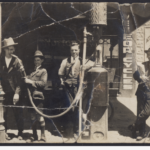

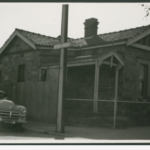
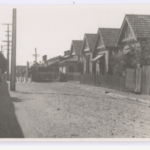
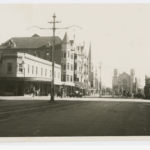
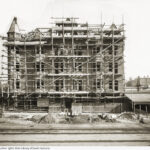
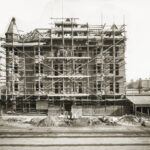
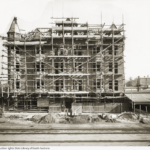

Comments